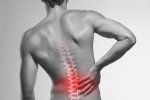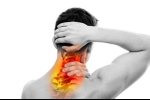Home »
Blog » Pain Management
| Stem Cell, PRP, Acupuncture in Queens & Long Island, New York
Pain Management | Stem Cell, PRP, Acupuncture in Queens & Long Island, New York
Knee tightness and stiffness - Knee tightness or stiffness in one or both knees is a common issue. Injuries, mechanical problems, or physical stressors on your knees like extra weight can cause tightness in your knee. Lack of flexibility or strength can also be contributing factors. Knee tightness is especially likely if you’ve had a knee injury or if you have a medical condition such as gout, arthritis, or an infection. Here we talk about different causes of knee stiffness and the basics of what you can do to manage associated symptoms.
Read more
The Truth About Back Pain - It might be a sharp stab. It might be a dull ache. Sooner or later, 8 out of 10 of us will have back pain. And back pain myths are almost as common. Let's set the record straight about what you may have heard.
Myth: Always Sit Up Straight - Slouching is bad. But sitting up too straight and still for long periods can also be a strain on your back. Take breaks a few times a day: Lean back in your chair with your feet on the floor and let your back curve slightly. Even better: Try standing for part of the day, perhaps while you're on the phone or reading.
Read more
The marvelous strength and flexibility that's engineered into your lower back also make it susceptible to developing lots of problems. And because of the many nerves that run throughout the spine and into the rest of your body, a problem in the lower back can lead to leg pain, hip problems and more.
Why is Your Lower Back So Prone to Injury?
The lower back is subject to injury while lifting a heavy object, twisting, or a sudden movement—any of which can cause muscles or ligaments to stretch or develop microscopic tears. Over time, poor posture or repetitive stress can also lease to muscle strain or other soft tissue problems.
Read more
Using sheep, whose knees are similar to human knees, researchers got the meniscus to regrow itself by implanting a biodegradable plastic device to lure stem cells and help them grow. Every year about 1 million people have surgery to repair a tear in the meniscus of their knee, according to the American Academy of Orthopedic Surgeons. It’s an injury that can’t be fully fixed since cartilage doesn’t repair itself very well. Even patients who have surgery often go on to develop arthritis. Some eventually need a knee replacement.
Read more
When back pain won’t go away, your doctor will consider all the treatments that could help you, from exercise and physical therapy to medication. Part of that may include injections to ease your back pain and inflammation. These shots usually consist of a steroid and a numbing medicine. Keep in mind that while these shots help some people, not everyone gets the same relief.
Read more
You may get different answers to this question, depending on who you ask. It is true that herniated disc symptoms can subside over time even without medical intervention. But does that mean the herniated disc has healed on its own? As with so many things, the answer is incomplete. Yes, your symptoms may resolve, but this does not necessarily mean the herniated disc itself has healed.
Read more
People take or apply cannabidiol to treat a variety of symptoms, but their use is controversial. There is some confusion about what it is and how it affects the human body. Cannabidiol (CBD) may have some health benefits, and it may also pose risks. This article will explain what CBD is, its possible health benefits, how to use it, potential risks, and issues surrounding its legality in the United States. In June 2018, the country's Food and Drug Administration (FDA) approved the prescription use of Epidiolex, a purified form of CBD oil, for treating two types of epilepsy.
Read more
Spinal anatomy is a remarkably intricate structure of strong bones, flexible ligaments and tendons, extensive muscles, and highly sensitive nerves and nerve roots. We often don't think about their form and function, though, until they become a source of pain. Without question, the composition and function of the spine is a marvel of nature, providing us with a unique combination of:
1. Protection for the spinal cord and nerve roots to safely relay messages to and from the brain and the rest of the body. 2 Shock absorption, accepting jolts and stress as we move about 3 Flexibility, especially in the lower back and neck, allowing us to bend and twist in a full variety of movements 4. The strength provided by the bones, discs, joints, and supporting muscles and connective tissue that allows us to stand upright and move about with precision
Read more
Pain in the left arm - If your arm hurts, your first thought maybe that you injured your arm. Pain in one part of the body can sometimes originate elsewhere. Pain in your left arm could mean you have a bone or joint injury, a pinched nerve, or a problem with your heart. Read on to learn more about the causes of left arm pain and what symptoms could signal a serious problem.
Read more
When back pain is caused by a spinal disc problem, the source of the pain is either from a nerve being irritated by a protruding disc, or it is from the disc space itself. Differentiating between the two can cause confusion among patients, as doctors may use a variety of terms to describe the problem—such as a slipped disc, pinched nerve, and degenerated disc. To help clarify disc problems, on this site we focus on identifying the source of the pain as coming from either a pinched nerve or a degenerated disc.
Read more
Love this Post? Spread the World






















